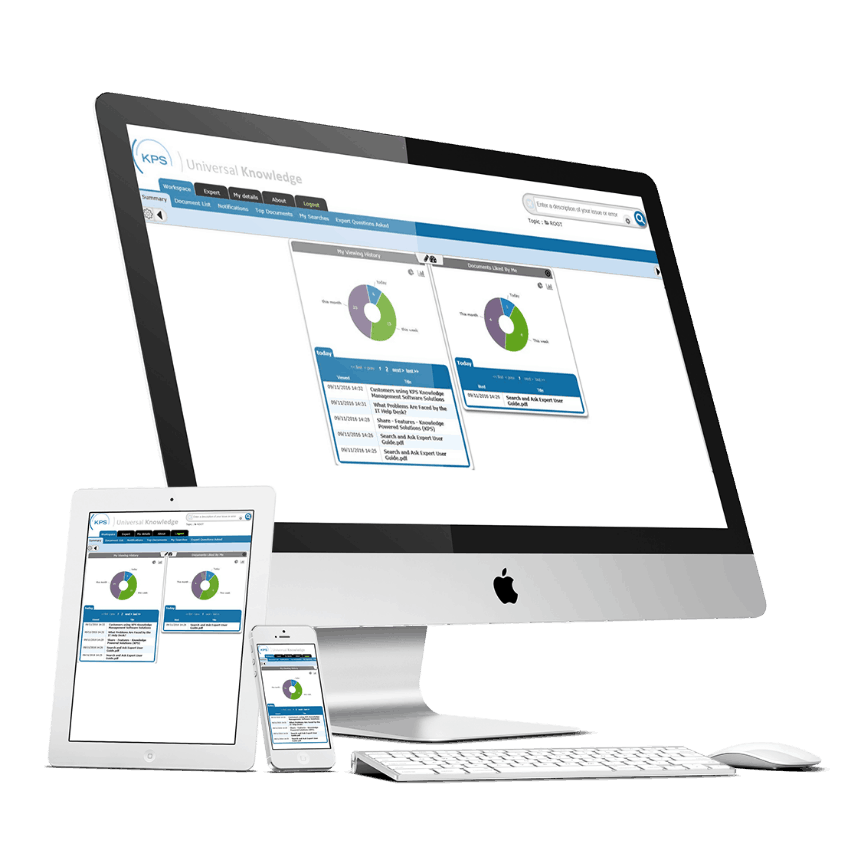The Knowledge Management features of Universal Knowledge provide a wide range of benefits to both the end user and to knowledge managers. Our Knowledge Management tool is a fully fledged comprehensive system that focuses on simplifying processes for internal/external customers and for managerial staff, allowing for simple searching, management and insight into your content. See below for our core and complimentary features.
KPS knowledge management software enables users to natural language search. All the user needs to do is to ask a question using words natural to them, and the KPS software will do the rest.
Through extensive natural language processing, our software allows users to cut through the jargon and ask simple questions that get in depth answers. With an understanding of how questions are phrased, a unique learning capability, and neural pattern matching technology, our software quickly matches users’ questions with the right solutions – no matter where this information is held within your organisation.
KPS software is designed for ease of administration, resulting in a system you can maintain and improve with minimal effort.
Comprehensive out-of-the box reporting gives clear insights into what people are searching for, what they are finding, and what the gaps are. This enables you to plan effectively for content improvements and also identify staff training needs.






